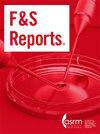Medical crowdfunding for cancer patients seeking fertility treatments: a cross-sectional analysis
IF 2.2
引用次数: 0
Abstract
Objective
To explore the use of crowdfunding among patients with cancer seeking funding to offset the cost of fertility treatments.
Design
Cross-sectional analysis of campaigns initiated on a single popular crowdfunding website, GoFundMe, for the purpose of subsidizing fertility treatments in patients with cancer from April to May 2022.
Subjects
Patients utilizing crowdfunding campaigns to subsidize fertility treatments for either themselves or a partner with a cancer diagnosis. Campaigns unrelated to both cancer and fertility treatment coverage were excluded.
Exposure
Not applicable.
Main Outcome Measures
Dollar amount requested; amount and percent of goal obtained; top donation amount; number of donors or comments; geographic location; and cancer diagnosis. Chi-squared analyses and ANOVA statistics were used to characterize prevalence of geographic locations represented and differences in amount of financial support, respectively. A P<.05 was considered statistically significant.
Results
A total of 1,195 campaigns were collected, spanning all regions of the United States and reflecting 23 different cancer diagnoses. The majority of campaigns resulted from breast (36.0%), lymphoma (10.6%), ovarian (7.1%), testicular (6.0%), or cervical (5.4%) cancer diagnoses. The average amount of funding requested across all campaigns was $31,390, with an average of $12,317 raised per campaign. More campaigns were initiated in Southern and Western regions of the United States compared with Northeastern and Midwestern (P<.001). However, Northeastern campaigns raised more money (P=.001), came closer to reaching their goals (P=.03), and gained more social support, as evidenced by number of donors (P<.001) and comments (P=.04). No statistically significant differences in financial or social outcomes were noted among campaigns when stratified by cancer type.
Conclusion
Patients with cancer who desire or require fertility treatments often face tremendous financial and social difficulties. Our results suggest a higher financial burden on patients with cancer in Southern and Western states, despite being less likely to reach financial goals or obtain as much social support as Northeastern counterparts. Overall, the majority of campaigns did not meet their financial goals.
寻求生育治疗的癌症患者的医疗众筹:横断面分析
目的探讨在癌症患者中利用众筹方式寻求资金来抵消生育治疗的费用。设计对2022年4月至5月在一个流行的众筹网站GoFundMe上发起的旨在资助癌症患者生育治疗的活动进行横断面分析。患者利用众筹活动资助自己或患有癌症的伴侣的生育治疗。与癌症和生育治疗覆盖率无关的运动被排除在外。ExposureNot适用。要求的金额;完成目标的金额和百分比;最高捐赠金额;捐助者或评论人数;地理位置;还有癌症诊断。分别使用卡方分析和方差分析统计来表征地理位置所代表的患病率和财政支持金额的差异。术;。0.05认为有统计学意义。结果共收集了1195个活动,涵盖美国所有地区,反映了23种不同的癌症诊断。大多数运动是由乳腺癌(36.0%)、淋巴瘤(10.6%)、卵巢癌(7.1%)、睾丸癌(6.0%)或宫颈癌(5.4%)诊断引起的。所有活动的平均筹款金额为31390美元,平均每个活动筹集了12317美元。与东北部和中西部地区相比,在美国南部和西部地区发起了更多的运动(P<.001)。然而,东北地区的竞选活动筹集了更多的资金(P=.001),更接近他们的目标(P=.03),并获得了更多的社会支持,这可以从捐助者数量(P=.001)和评论(P=.04)中得到证明。当按癌症类型分层时,在财务或社会结果方面没有统计学上的显著差异。结论希望或需要进行生育治疗的癌症患者往往面临巨大的经济和社会困难。我们的研究结果表明,南部和西部各州的癌症患者的经济负担更高,尽管他们不太可能达到财务目标或获得与东北部同行一样多的社会支持。总的来说,大多数活动没有达到他们的财务目标。
本文章由计算机程序翻译,如有差异,请以英文原文为准。
求助全文
约1分钟内获得全文
求助全文

 求助内容:
求助内容: 应助结果提醒方式:
应助结果提醒方式:


